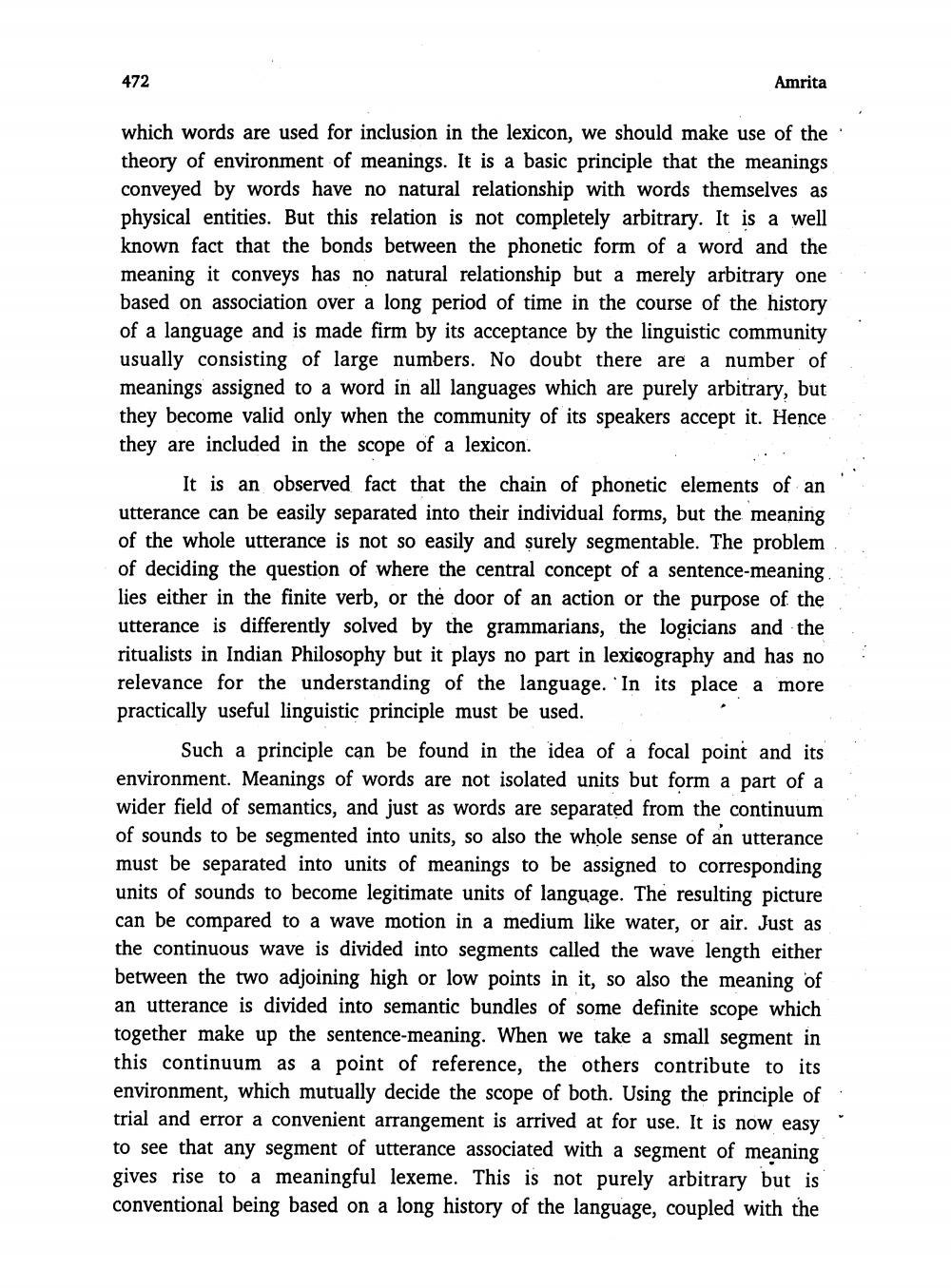________________
472
Amrita
which words are used for inclusion in the lexicon, we should make use of the theory of environment of meanings. It is a basic principle that the meanings conveyed by words have no natural relationship with words themselves as physical entities. But this relation is not completely arbitrary. It is a well known fact that the bonds between the phonetic form of a word and the meaning it conveys has no natural relationship but a merely arbitrary one based on association over a long period of time in the course of the history of a language and is made firm by its acceptance by the linguistic community usually consisting of large numbers. No doubt there are a number of meanings assigned to a word in all languages which are purely arbitrary, but they become valid only when the community of its speakers accept it. Hence they are included in the scope of a lexicon.
It is an observed fact that the chain of phonetic elements of an utterance can be easily separated into their individual forms, but the meaning of the whole utterance is not so easily and surely segmentable. The problem of deciding the question of where the central concept of a sentence-meaning lies either in the finite verb, or the door of an action or the purpose of the utterance is differently solved by the grammarians, the logicians and the ritualists in Indian Philosophy but it plays no part in lexicography and has no relevance for the understanding of the language. In its place a more practically useful linguistic principle must be used.
Such a principle can be found in the idea of a focal point and its environment. Meanings of words are not isolated units but form a part of a wider field of semantics, and just as words are separated from the continuum of sounds to be segmented into units, so also the whole sense of an utterance must be separated into units of meanings to be assigned to corresponding units of sounds to become legitimate units of language. The resulting picture can be compared to a wave motion in a medium like water, or air. Just as the continuous wave is divided into segments called the wave length either between the two adjoining high or low points in it, so also the meaning of an utterance is divided into semantic bundles of some definite scope which together make up the sentence-meaning. When we take a small segment in this continuum as a point of reference, the others contribute to its environment, which mutually decide the scope of both. Using the principle of: trial and error a convenient arrangement is arrived at for use. It is now easy to see that any segment of utterance associated with a segment of meaning gives rise to a meaningful lexeme. This is not purely arbitrary but is conventional being based on a long history of the language, coupled with the




